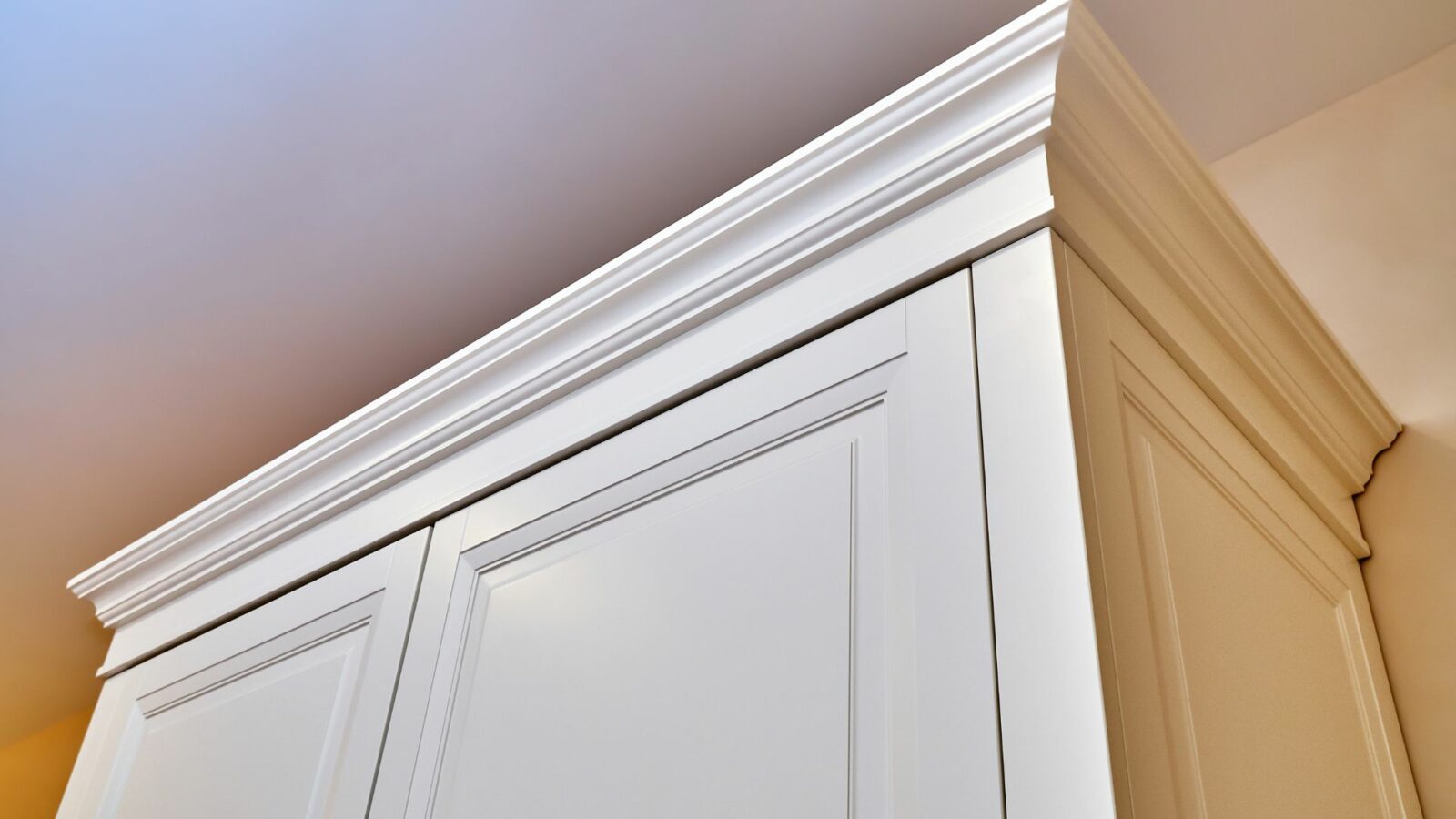Crown molding is a decorative trim used to enhance the appearance of a room by providing a seamless transition between walls and ceilings or cabinets. When applied to cabinetry, it adds a touch of sophistication and elegance, elevating your kitchen’s overall aesthetic. This blog will dive into the different types of cabinet crown molding, how to choose the right style, and a guide to installation.
Types of Cabinet Crown Molding
Cabinet crown molding comes in various styles and materials to suit any design preference. Some popular types include:
Traditional
Traditional crown molding features elegant curves and ornate patterns that complement classic and timeless designs.
Contemporary
This style showcases clean lines and simple geometric shapes, ideal for minimalist and modern kitchens.
Cove
Cove molding is a concave design that creates a subtle, understated transition between cabinets and the ceiling.
Dentil
Dentil molding consists of a series of small, evenly spaced blocks, adding a touch of architectural detail to your cabinetry.
Material Options
Cabinet crown molding is available in various materials, including wood, MDF, plaster, and polyurethane. The choice of material depends on your budget and design preferences.
Choosing the Right Style
When selecting the appropriate crown molding for your cabinets, consider the following factors:
Cabinet style
Your crown molding should complement the existing cabinetry style. Traditional molding pairs well with raised-panel doors, while contemporary molding works best with flat-panel or shaker-style cabinets.
Kitchen design
Consider the overall design theme of your kitchen. A modern, minimalist kitchen may not suit ornate molding, while a classic, traditional space might not be enhanced by sleek, simple trim.
Ceiling height
The size and profile of your crown molding should be proportional to your ceiling height. For higher ceilings, you can opt for larger, more elaborate moldings, while lower ceilings are better suited for simpler, more streamlined designs.
Installation Guide
Installing cabinet crown molding is a relatively straightforward DIY project. Here’s a step-by-step guide:
- Measure and cut: Start by measuring the length of your cabinets and cutting the molding pieces accordingly. Make sure to account for any angle cuts needed for corners.
- Miter the corners: When joining two molding pieces at a corner, cut each end at a 45-degree angle using a miter saw. This will ensure a seamless and professional-looking joint.
- Attach molding to cabinets: Use a combination of wood glue and finish nails to secure the molding to the top edge of your cabinets. A nail gun can be helpful for this step, but make sure to use the appropriate nail length to avoid damaging your cabinets.
- Fill gaps and nail holes: Use wood filler to cover any gaps or nail holes, sanding the area smooth once it has dried.
- Paint or stain: Depending on your material and design, you may need to paint or stain the molding to match your cabinets. If you’re using pre-finished molding, this step can be skipped.
Conclusion
Cabinet crown molding is an excellent way to add a touch of sophistication and elevate the overall look of your kitchen. With a variety of styles and materials to choose from, you can easily find the perfect molding to suit your design preferences. By carefully selecting and installing your crown molding, you can transform your kitchen from ordinary to extraordinary, creating a space that is both functional and visually stunning.








